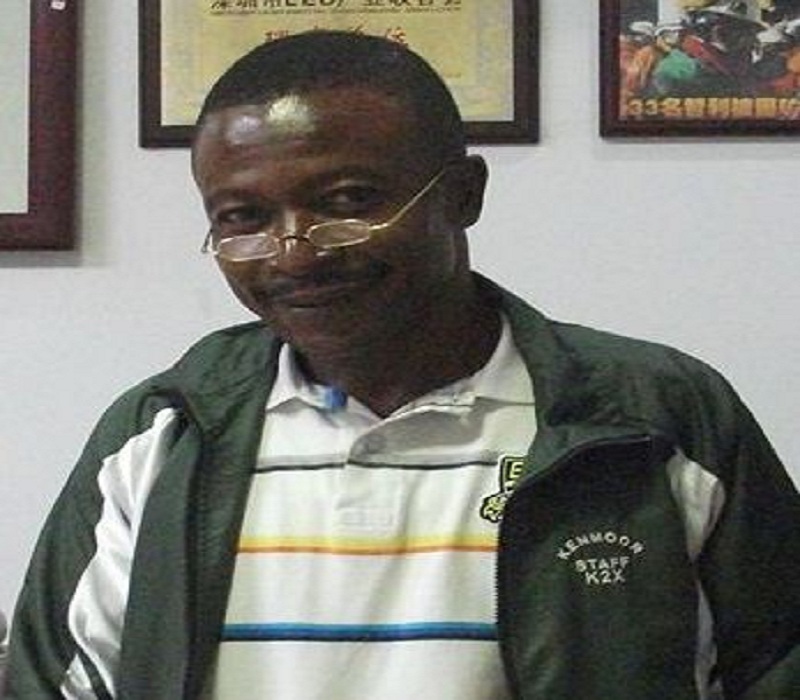CHIDI OHAGI, a native of Isuochi, in the Umunneochi Local Government Area of Abia State is an exceptional inventor. He had stints at the Cleaveman Institute of Electronics, Ohio in the United States of America as well as Radio Netherland, and has made multiple breath-taking inventions that if financed, would take Nigeria out of its technological doldrums and properly place her among the comity of technological nations.
OHAGI has made inventions in diverse technologies including Alternative Energies, Surveillance, Anti-Intrusion Systems, Counter Measures, Early Warning Systems, Automation & Controls, and Safe Rooms and Tunnelings among others.
Unfortunately, OHAGI claims in this exclusive interview with our Editor, Rommy IMAH, that he has not received any support from both the Abia state government and the Nigerian Federal Government even after making presentations of his inventions.
Six years after the invention of Cohagi Infusion Monitor, what is the progress report?
The only meaningful progress is that I was able to clear my way through to USPTO (United States Patents and Trade Office). It’s difficult for any invention to cross that threshold for global recognition and acceptance; it takes a lot of eagle eye scrutiny and takes some real money if you’re found eligible.
It takes time too for their strict examiners to score you through especially from black Africa. But I’m happy to say I’m there at last. The invention is patented in the USA. This is particularly important in confidence-building for me, would-be partners as well as would-be users in the industry.
For the benefit of those who did not witness this landmark invention, tell us what CIM is all about?
At present, Infusion Bottles/bags are being hung on a stand to supply the required fluid content (whether blood or glucosamine) to a patient. However there’s no provision as of now to monitor the process to check a few anomalies consistent with the therapy like the Level check in some instances where full content is not required to be given, especially children or diabetics; Line tissue or blockage; Content exhaustion/emptying; as well as patient’s general well-being, therefore an attendant is required to do the same job.
Hence, there is a need to develop an Infusion monitor and compact remote communication medium to address the aforementioned problems.
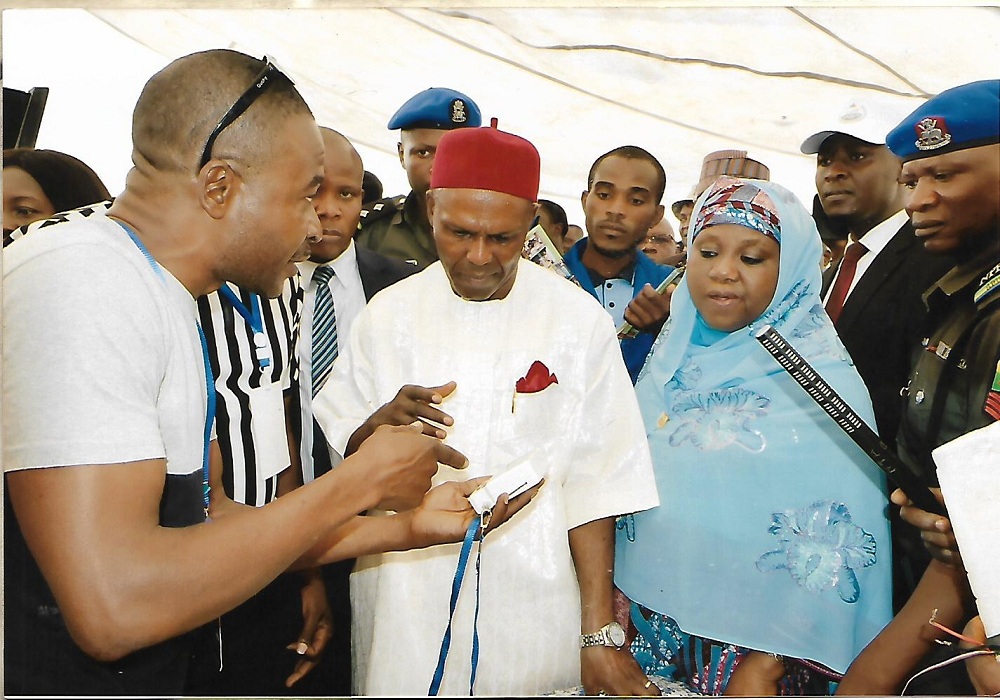
Tell us what informed this invention and the issues it has been able to address
The present invention is to provide a monitoring medium that will overcome the anomalies consistent with the prior art. So I set out to provide a device that does not require an attendant constantly thereby relieving the ever-busy medics of some hassles in clinical practices.
Most interestingly, the remote unit entertains calls from both the medical consultant on duty and designated patients under care- thereby bringing full-cycle interactivity between patients, doctors as well as the medics or Para-medics.
The COHAGI INFUSION Monitor is a microcontroller device which has an adaptive hanger with which it’s hung on the present-day infusion hanger and a bottom fishhook to hang the infusion bag or bottle. It has programming and function buttons, and a display screen.
Take, for instance, the Main Patients’ Bed Unit, upon hanging the Infusion bag/bottle, the total weight is displayed in grams. By pressing the function button (after programming), weight is converted to percentage- by default, totalling 100%. When transfusion is initialized, the descent of the initial figure starts.
As the percentage drops to a predetermined limit, such as 10% (meaning that 90% of fluid has entered the patient), it gives an audible alert through a buzzer in the mobile mimic unit as well as a visible indication in both the main unit and remote unit.

A number of settings can be provided such as 05, 10,15, 16, 17, 30, 40 etc. As the fluid level depreciates from 100%, 99%, 98%, 97% etc., all other activities like line tissue/patients’ temperatures/patients’ help calls are being observed simultaneously.
When an alarm is triggered by any of the features, a clear button on the unit is used to delete/reset the system to take new info. Most interestingly, the concept is a non-contact medium that does not have to do with the liquid content thereby preventing contamination.
For the Mobile Monitoring Unit, the mimic (remote) Unit is a host monitoring proceedings from up to five patients main stations with an RF remote range of up to 75m radius. All patients’ stations/units and activities will be monitored in a graphed partition of the host unit.
Each battery-powered main unit registers presence in its designated number box at the mobile unit monitor screen.
Talking about the Line Tissue, during fluid transmission, the vein gets blocked at times or the needle veers off the vein path; the device gives an audible and visual indication.
Each COHAGI infusion monitor is equipped with a digital pen-type thermometer to test individual patients. This is very vital especially with the cases of infectious diseases like Sars and Covid viruses.
When a patient’s temperature is taken, it displays on both the bedside unit and the mobile station. Moreso, if abnormal temperature develops either lower or higher than the normal healthy human is required, an audible alarm, as well as visual indication, is transmitted automatically to the mobile unit.
When a patient needs help (especially a weak patient), there’s a proximity of a micro button on the thermometer. When the help button is pressed, an audible alarm is sent to the mobile unit as well as a visual indication identifying the patient that made the call.
Interestingly, this concept can be interfaced with: SCADA/PC/LAPTOP so that the data from the system can be accessed from elsewhere.
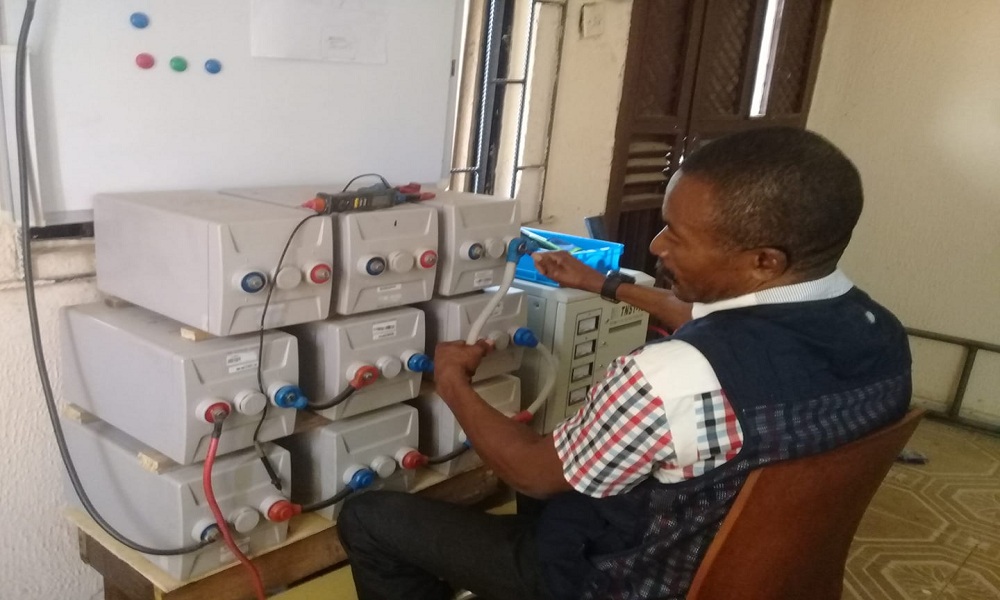
Have you now embarked on the commercial production of the monitors?
Not yet, due to mainly the delays encountered in my PATENTS application in the US. Also, real funds are required to avail enough numbers in the first batch.
What level of patronage have you gotten from the Abia State government as well as the Nigerian government?
There has not been any form of patronage or support whatsoever from both the state and federal governments.
At the federal level, I’ve had to do with the Science and Technology Minister, Dr Ogbonnaya Onu twice, during the 2018 and 2019 Science and Technology expo at Eagles Square Abuja and Okpara Square Enugu respectively. I will never respond to an invitation to any exhibition in this country again.
But at the State level, I’ve never had anything to do with the state governor but, his representative, one Chinenye Nwogu was with me at an event at BINEZ Hotel Aba during an entrepreneur exhibition in which Cosmos Maduka ( COSCHARIS) was the first guest speaker and I was second.
I also exhibited at the event and the governor’s special assistant and representative exchanged contacts with me. But funny enough, when I called him twice as we agreed so I could have a date with the governor, he behaved as though I’m a commoner, I abandoned his way.
A veteran journalist with DW Dutchweller Radio, Mr Mohammed Bello also tried to reach out to our governor but didn’t get any positive response.
Besides the CIM, is there any other invention you have successfully made in the medical space or outside of it?
Yes, I have other inventions most prominently my smart weapons system which was on display at Okpara Square Enugu and the Science and Technology minister observed it- though he did not allow me to test-fire.
What do you think are the challenges faced by prospective inventors in Nigeria?
Major challenges facing prospective inventors in the country today are very enormous. Nigeria is a buy and sell economy. Import anything in large quantities and flood the market, even if it’s toxic waste, people will buy- from used pants to used bra, used handkerchief, used latex gloves and all whatnot.
If you’re talking about a new concept or indigenous concept, you’re on your own. Except you’re able to escape like some of our big brothers, the likes of Prof. Phillip Emeagwali, Prof Gabriel Oyibo, Prof Peter Kalu and a host of others, you can’t make any headway within the country.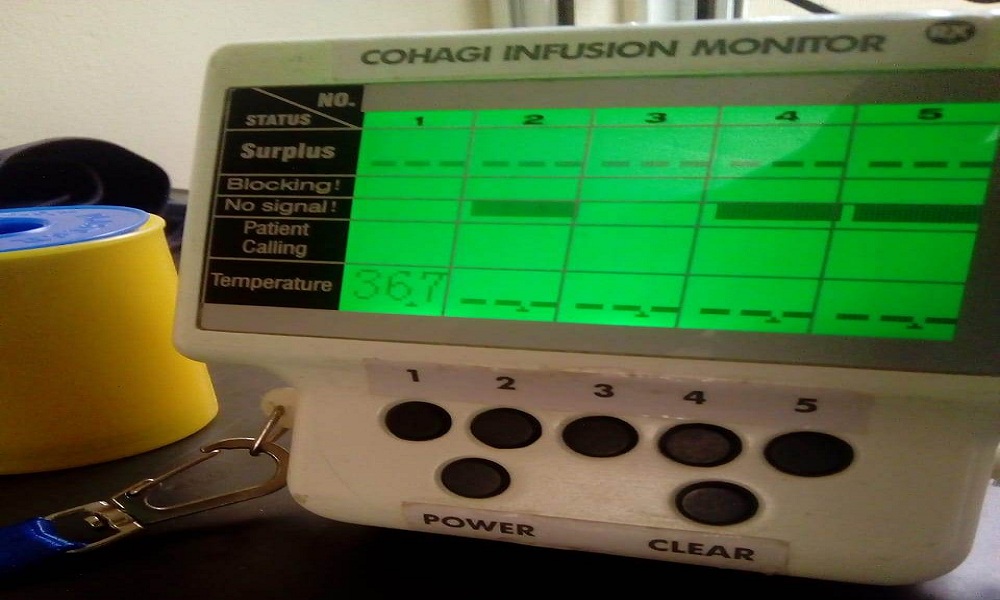
You can sell your patents in exchange for citizenship and cash to provide social security for your offspring. When such inventions are developed and packaged and brought back here, our people buy.
Except you are able to build your personal finances through other businesses and build factories like our patriotic big brother, Chief Innoson. But the question is: how many inventors or innovators would be able to get there on their own?
We are blacks and hate ourselves. The government doesn’t care about indigenous inventors and since the politicians do not care, how would private individuals who made their monies through suffering like COSCHARIS risk their funds to finance inventors? It is impossible.
In fact, it’s possible for a Nigerian to put his or her money into a hoax or phantom cock and bull investment portfolio that would evaporate tomorrow than to sacrifice money in funding inventions.
And what do you think can be done to promote indigenous inventions in the country?
First of all, our politicians need to be sincere. They must cease to pay lip services through media cameras. For instance, every year, the Science and Tech ministry invites inventors to exhibitions and most of such real-time inventors travel all the way from their different regions only to get stranded at the end of the day.
I watched with pains in my heart when the chief host of the event (the honourable minister) walked around the arena being besieged by camera crews and his entourage, he’d not be allowed to even get closer to the exhibitors.
He mostly visits government-affiliated groups like SEDI, PRODA and suchlike. They must learn to discern who are the real-time inventors and those who are pseudo inventors!
The government is not sincere and I say this without apologies. Look at such great inventors like Pa Engr. Ezekiel Izuogu of Imo State, one of the greatest inventors of our time. He propagated the e-magneto dynamics concept in which he utilised permanent magnets to generate motions, achieving a lifelong power generator; what has the government done with his inventions or for him?
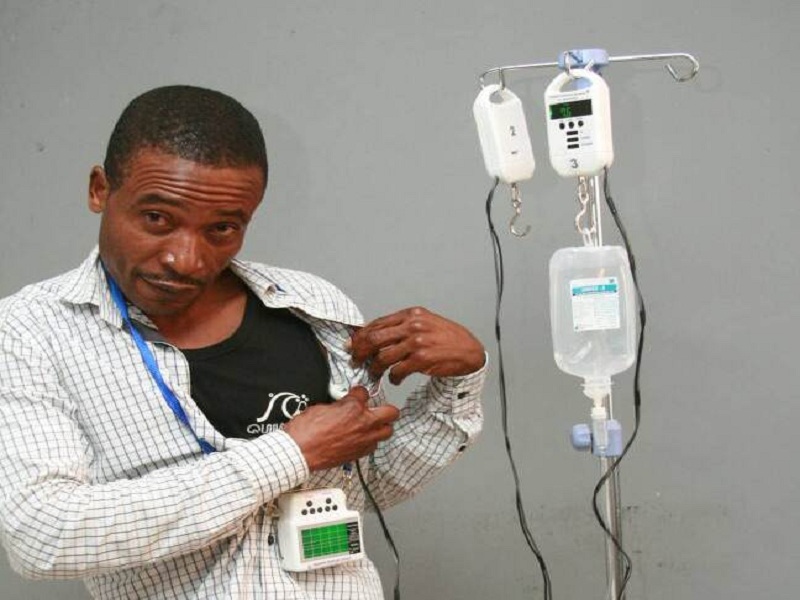
Utilising the same concept, he made a car which we heard he drove from Owerri to Abuja to see the then president, Olusegun Obasanjo. What came of it? We later heard that the same car, his moulds, his paperwork of more than 30 years were stolen when about 16 gunmen stormed his lab. Is this the kind of country that would ever aid indigenous inventors? Never!
How do you see the place of technology in Nigeria’s medical sector?
Well, the medical sector here really needs revolution technologically. I must tell you that we have very excellent professionals in the industry but they are like good technicians without good tools. All my time in India and China, I discovered that the difference between them and our medical professionals is just equipment. There’s no magic.
Yet, our politicians would prefer to go out there to receive treatment and return without trying to copy or replicate any of those good things out there. We meet them all out there. They’re pathological and unrepentant hypocrites.
When I got to New Delhi India first time, I suspected that Mr Raji Fashola, the former governor of Lagos State must have been to New Delhi. I thought so because the BRT transit buses and bus stop designs are exactly similar to what is in New Delhi.
The only difference is that the metal works at the bus stations in India are stainless steel whereas that of Lagos are black steelworks, but at least he’s the only sincere governor of recent times.

